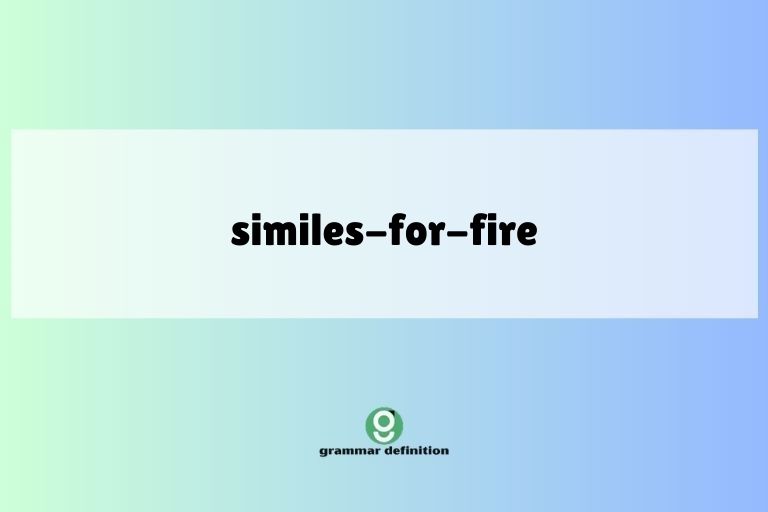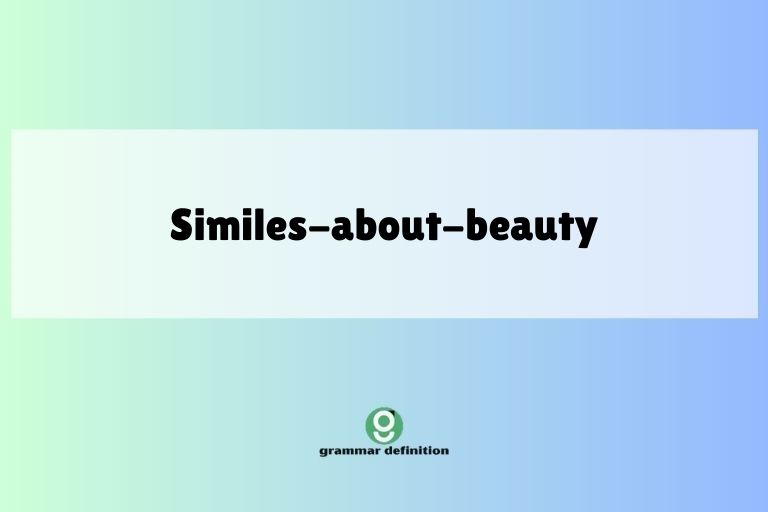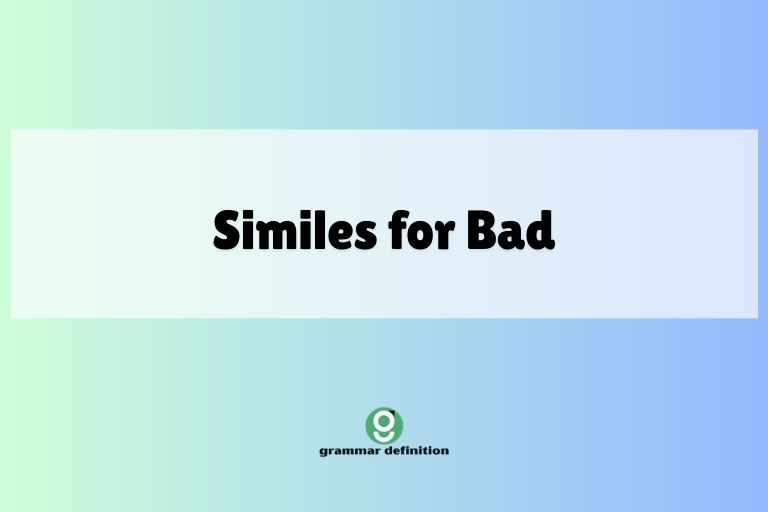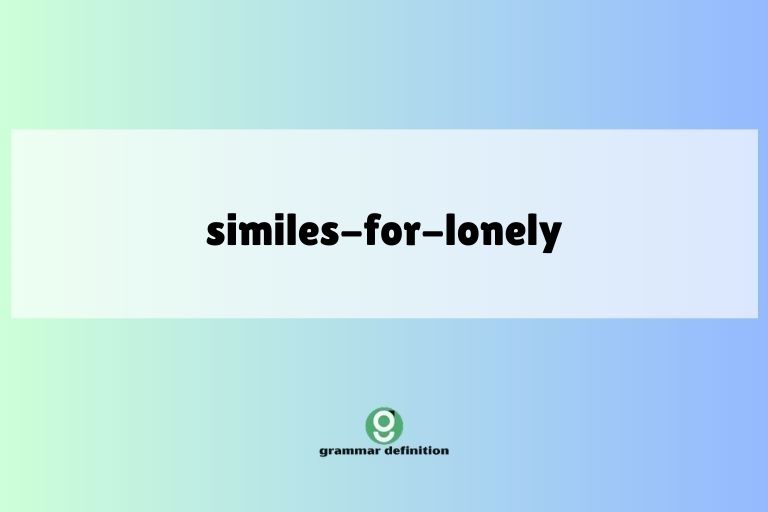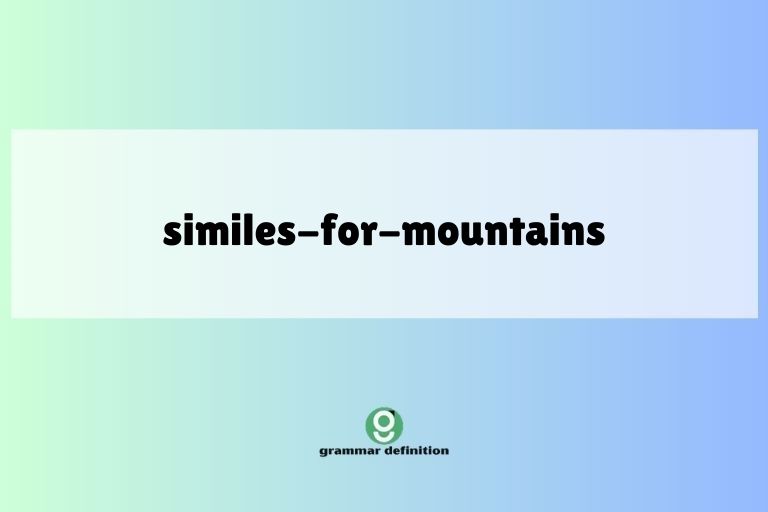Purrfect Comparisons: Mastering Similes for Cats
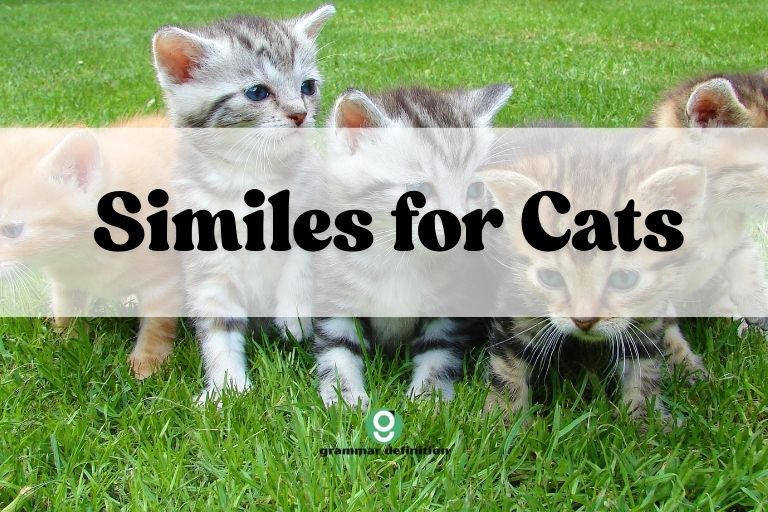
Similes are powerful tools in the English language, allowing us to create vivid imagery and enhance our descriptions. When writing about cats, those enigmatic and graceful creatures, similes can be particularly effective.
Understanding how to craft and use similes correctly will not only improve your writing but also deepen your appreciation for the nuances of language. This article will guide you through the world of similes, focusing specifically on their application in describing cats, making your writing more engaging and expressive.
This guide is designed for English language learners, writers looking to improve their descriptive skills, and anyone who wants to better understand and appreciate the art of using similes.
Whether you’re writing a poem, a short story, or simply trying to add flair to your everyday conversations, mastering similes for cats will prove to be a valuable skill. By the end of this article, you’ll be equipped with the knowledge and practice needed to create your own purrfect comparisons.
Table of Contents
- What is a Simile?
- Structural Breakdown of Similes
- Types of Similes
- Examples of Similes for Cats
- Usage Rules for Similes
- Common Mistakes with Similes
- Practice Exercises
- Advanced Topics: Metaphors vs. Similes
- Frequently Asked Questions
- Conclusion
What is a Simile?
A simile is a figure of speech that compares two unlike things using the words “like” or “as.” Its primary function is to create a vivid and imaginative connection between the two things being compared, thus enhancing the reader’s understanding and appreciation of the subject. Similes add color, depth, and emotional resonance to writing, making it more engaging and memorable. Unlike metaphors, which directly equate two things, similes acknowledge the difference between them while highlighting a shared quality.
For example, saying “The cat’s fur was like velvet” doesn’t mean the cat’s fur *is* velvet. It means the fur shares a characteristic – its softness – with velvet. This comparison helps the reader visualize and understand the texture of the cat’s fur more effectively. Similes are prevalent in all forms of literature, from poetry and prose to everyday conversation, and are a crucial tool for any writer looking to improve their descriptive abilities.
Structural Breakdown of Similes
The structure of a simile is relatively straightforward, typically consisting of three main components: the subject, the linking word (“like” or “as”), and the object of comparison. Understanding these components is essential for crafting effective and meaningful similes.
- Subject: This is the thing being described or compared. In the context of this article, the subject will often be a cat or some aspect of a cat (e.g., its eyes, its fur, its movements).
- Linking Word: This is the word that establishes the comparison. The two most common linking words are “like” and “as.” While they are often interchangeable, subtle differences in connotation can sometimes make one more appropriate than the other.
- Object of Comparison: This is the thing to which the subject is being compared. It should share a specific characteristic with the subject, creating a meaningful and understandable connection.
Here’s a simple example illustrating these components:
The cat’s eyes (subject) were like (linking word) emeralds (object of comparison).
In this example, the cat’s eyes are being compared to emeralds, highlighting their shared green color and brilliance. The use of “like” explicitly signals that this is a comparison, not an assertion that the eyes *are* emeralds.
The order of these components can sometimes be varied for stylistic effect, but the core structure remains the same. For instance, you could say, “As stealthy as a shadow, the cat stalked its prey.” Here, the linking word (“as”) comes first, followed by the object of comparison (a shadow), and then the subject (the cat). No matter the order, the purpose is always to draw a comparison between two distinct entities.
Types of Similes
While all similes share the same basic structure, they can be categorized based on the type of comparison they make. Understanding these different types can help you choose the most effective simile for your specific purpose.
Descriptive Similes
Descriptive similes focus on physical attributes or qualities. They aim to create a vivid image in the reader’s mind by comparing the subject to something with similar characteristics.
These similes are particularly useful for painting a picture of what something looks, feels, sounds, or smells like.
Example: “The cat’s fur was as soft as a cloud.” This simile emphasizes the softness of the cat’s fur by comparing it to the familiar texture of a cloud.
Behavioral Similes
Behavioral similes compare the actions or habits of the subject to those of something else. They help to illustrate how something behaves or acts in a particular situation.
Example: “The cat stalked its prey like a seasoned hunter.” This simile highlights the cat’s hunting prowess by comparing its behavior to that of an experienced hunter.
Emotional Similes
Emotional similes convey the feelings or emotions associated with the subject. They aim to evoke a particular emotional response in the reader by comparing the subject’s emotional state to something that evokes a similar feeling.
Example: “The cat purred as content as a baby.” This simile conveys the cat’s contentment by comparing it to the peaceful state of a baby.
Abstract Similes
Abstract similes compare intangible qualities or concepts. They are often used to explain complex or abstract ideas by relating them to something more concrete and understandable.
Example: “The cat’s independence was like a fortress.” This simile compares the cat’s self-reliance to the strength and resilience of a fortress.
Examples of Similes for Cats
Here are several examples of similes tailored specifically for describing cats, categorized by the aspect of the cat being described.
Similes Describing a Cat’s Appearance
These similes focus on the physical attributes of a cat, such as its fur, eyes, and overall appearance. The table below provides a range of comparisons to help you visualize these features.
| Simile | Explanation |
|---|---|
| The cat’s fur was as black as midnight. | Emphasizes the deep, rich color of the cat’s fur. |
| Its eyes shone like golden coins. | Highlights the bright, yellow color of the cat’s eyes. |
| The cat moved as gracefully as a dancer. | Compares the cat’s movements to the elegance of a dancer. |
| His tail swayed like a metronome. | Describes the rhythmic movement of the cat’s tail. |
| Her whiskers were as delicate as spiderwebs. | Highlights the thinness and fragility of the cat’s whiskers. |
| The cat’s paws were as soft as velvet. | Emphasizes the gentle texture of the cat’s paws. |
| Its coat shimmered like polished ebony. | Describes the glossy, dark appearance of the cat’s coat. |
| His ears twitched like radar dishes. | Compares the cat’s sensitive ears to radar technology. |
| Her fur felt like spun silk. | Emphasizes the smoothness and fineness of the cat’s fur. |
| The cat’s gaze was as piercing as an arrow. | Highlights the intense and focused nature of the cat’s stare. |
| Its silhouette was as sleek as a panther. | Compares the cat’s shape to the streamlined form of a panther. |
| His stripes were as bold as a tiger’s. | Emphasizes the striking pattern of the cat’s stripes. |
| Her eyes glowed like embers in the dark. | Describes the warm, luminous quality of the cat’s eyes. |
| The cat’s fur was as white as snow. | Emphasizes the pure, bright color of the cat’s fur. |
| Its claws were as sharp as needles. | Highlights the pointedness and potential danger of the cat’s claws. |
| His fur was as thick as a winter blanket. | Emphasizes the density and warmth of the cat’s fur. |
| Her tail puffed up like a bottle brush. | Describes the bristly appearance of the cat’s tail when alarmed. |
| The cat’s face was as round as the moon. | Highlights the circular shape of the cat’s face. |
| Its markings were as unique as fingerprints. | Emphasizes the individuality of the cat’s coat pattern. |
| His paws were as silent as shadows. | Describes the quietness of the cat’s footsteps. |
| Her coat was as patchy as a quilt. | Emphasizes the varied colors and patterns of the cat’s fur. |
| The cat’s ears were as pointed as arrowheads. | Highlights the sharp, triangular shape of the cat’s ears. |
| Its body was as flexible as rubber. | Compares the cat’s agility to the elasticity of rubber. |
| His fur was as tangled as a bird’s nest. | Emphasizes the unkempt appearance of the cat’s fur. |
| Her eyes changed color like the sea. | Describes the shifting hues of the cat’s eyes. |
| The cat’s teeth were as small as rice grains. | Highlights the diminutive size of the cat’s teeth. |
| Its tongue was as rough as sandpaper. | Emphasizes the abrasive texture of the cat’s tongue. |
| His nose was as pink as a rose petal. | Describes the delicate color of the cat’s nose. |
Similes Describing a Cat’s Behavior
These similes focus on how a cat acts and interacts with its environment. They can describe a cat’s hunting instincts, playful nature, or general demeanor.
Use these examples to add depth to your descriptions.
| Simile | Explanation |
|---|---|
| The cat stalked its prey like a shadow. | Emphasizes the cat’s stealth and quietness. |
| It pounced on the toy like a tiger attacking its prey. | Highlights the cat’s predatory instincts and agility. |
| The cat purred as loudly as a motor. | Describes the intensity and volume of the cat’s purr. |
| He slept as soundly as a log. | Emphasizes the depth and peacefulness of the cat’s sleep. |
| She watched the birds like a hawk. | Compares the cat’s focused attention to that of a hawk. |
| The cat stretched as languidly as a snake. | Describes the slow, graceful movements of the cat. |
| It played with the yarn like a child. | Highlights the cat’s playful and innocent behavior. |
| He rubbed against my legs like a furry scarf. | Describes the cat’s affectionate and tactile behavior. |
| She ignored me as completely as if I were invisible. | Emphasizes the cat’s aloof and independent nature. |
| The cat ate its food as delicately as a gourmand. | Compares the cat’s eating habits to the refined tastes of a food lover. |
| It climbed the curtains like a mountaineer. | Highlights the cat’s climbing skills and determination. |
| He hid under the bed like a scared rabbit. | Describes the cat’s fearful and evasive behavior. |
| She greeted me at the door like a long-lost friend. | Emphasizes the cat’s enthusiastic and welcoming behavior. |
| The cat explored the new house like an adventurer. | Compares the cat’s curiosity to that of an explorer. |
| It groomed itself as meticulously as a perfectionist. | Highlights the cat’s fastidious grooming habits. |
| He begged for treats like a persistent salesman. | Describes the cat’s insistent and persuasive behavior. |
| She napped in the sunbeam like a sunbather. | Emphasizes the cat’s enjoyment of warmth and relaxation. |
| The cat chased the laser pointer like a madman. | Highlights the cat’s intense focus and energy. |
| It batted at the dust motes like a playful ghost. | Describes the cat’s whimsical and lighthearted behavior. |
| He watched the rain like a philosopher contemplating the universe. | Compares the cat’s contemplative gaze to that of a deep thinker. |
| She curled up on my lap like a warm blanket. | Emphasizes the cat’s comforting and affectionate behavior. |
| The cat demanded attention like a spoiled child. | Highlights the cat’s neediness and expectation of pampering. |
| It ignored the dog like royalty ignoring a peasant. | Compares the cat’s indifference to a hierarchical social dynamic. |
| He purred when I stroked him like a well-oiled machine. | Describes the smooth and consistent sound of the cat’s purr. |
| She played with the box like it was the greatest treasure. | Emphasizes the cat’s simple pleasures and imagination. |
| The cat hid from the vacuum cleaner like it was a monster. | Highlights the cat’s fear and aversion to loud noises. |
| It perched on the highest shelf like a king on his throne. | Compares the cat’s sense of superiority to a monarch’s power. |
| He jumped from the counter like an acrobat. | Describes the cat’s agility and precision. |
Similes Describing a Cat’s Movements
These similes capture the unique way cats move, whether they are slinking, leaping, or simply walking. The comparisons aim to highlight their grace, agility, and stealth.
| Simile | Explanation |
|---|---|
| The cat moved as silently as a ghost. | Emphasizes the cat’s quiet and stealthy movements. |
| It jumped as high as a basketball player. | Highlights the cat’s impressive jumping ability. |
| The cat stalked its prey as low to the ground as a snake. | Compares the cat’s hunting posture to that of a snake. |
| He ran as fast as a cheetah when startled. | Emphasizes the cat’s surprising speed. |
| She climbed the tree as effortlessly as a squirrel. | Compares the cat’s climbing skills to those of a squirrel. |
| The cat landed as softly as a feather. | Highlights the cat’s graceful landing technique. |
| It stretched as far as it could reach, like a rubber band. | Describes the cat’s flexibility and range of motion. |
| He wove through the furniture as smoothly as water. | Compares the cat’s movements to the fluidity of water. |
| She crept through the grass as cautiously as a spy. | Emphasizes the cat’s careful and deliberate movements. |
| The cat darted across the room like a bolt of lightning. | Highlights the cat’s sudden and rapid movements. |
| It balanced on the fence as steadily as a tightrope walker. | Compares the cat’s balance to that of a professional performer. |
| He pounced on the toy as fiercely as a lion. | Emphasizes the cat’s powerful and aggressive movements. |
| She slipped through the doorway as quietly as a breeze. | Compares the cat’s movements to the gentle passage of air. |
| The cat tumbled and rolled like a ball of yarn. | Describes the playful and uncoordinated movements of the cat. |
| It leaped from the couch as agile as a gymnast. | Highlights the cat’s athletic and coordinated movements. |
| He tiptoed across the keyboard as carefully as a surgeon. | Compares the cat’s delicate movements to those of a skilled professional. |
| She slid down the banister as smoothly as a skater. | Emphasizes the cat’s effortless and graceful descent. |
| The cat explored the attic as cautiously as an archaeologist. | Compares the cat’s exploratory movements to those of a researcher. |
| It sprang into the air as unexpectedly as a jack-in-the-box. | Highlights the cat’s sudden and surprising movements. |
| He padded through the snow as softly as cotton. | Compares the cat’s quiet footsteps to the gentle texture of cotton. |
| She crept along the ledge as carefully as a burglar. | Emphasizes the cat’s stealthy and cautious movements. |
| The cat slinked through the bushes like a secret agent. | Compares the cat’s secretive movements to those of a spy. |
| It swayed its hips as it walked like a supermodel. | Highlights the cat’s elegant and graceful gait. |
| He dashed up the stairs like a rocket. | Emphasizes the cat’s rapid and powerful ascent. |
| She stretched her paws out as delicately as a ballerina. | Compares the cat’s graceful extension to that of a dancer. |
| The cat balanced on the narrow beam like a seasoned acrobat. | Highlights the cat’s impressive balance and agility. |
| It jumped across the gap as confidently as a parkour expert. | Compares the cat’s fearless leap to that of a skilled athlete. |
| He rolled onto his back as playfully as a puppy. | Emphasizes the cat’s lighthearted and energetic movements. |
Similes Describing a Cat’s Sounds
These similes focus on the sounds a cat makes, such as purring, meowing, hissing, and growling. They aim to capture the nuances of these sounds and the emotions they convey.
| Simile | Explanation |
|---|---|
| The cat purred as softly as a lullaby. | Emphasizes the gentle and soothing nature of the cat’s purr. |
| It meowed as loudly as a baby crying. | Highlights the demanding and attention-seeking quality of the cat’s meow. |
| The cat hissed as fiercely as a dragon. | Compares the cat’s defensive sound to the mythical creature. |
| He growled as menacingly as a guard dog. | Emphasizes the cat’s threatening and protective sound. |
| She chirped as sweetly as a bird. | Compares the cat’s vocalization to the pleasant sound of a bird. |
| The cat’s purr vibrated as deeply as a cello. | Highlights the resonant and profound quality of the cat’s purr. |
| It mewed as plaintively as a lost kitten. | Emphasizes the cat’s sad and vulnerable sound. |
| He yowled as dramatically as an opera singer. | Compares the cat’s vocalization to the exaggerated style of an opera performer. |
| She purred when petted like a contented engine. | Describes the consistent and rhythmic sound of the cat’s purr. |
| The cat’s meow echoed as sharply as a whistle. | Highlights the piercing and attention-grabbing quality of the cat’s meow. |
| It growled low like distant thunder. | Compares the cat’s rumbling growl to the sound of a storm. |
| He screeched like chalk on a blackboard when the vet arrived. | Emphasizes the cat’s high-pitched and unpleasant sound. |
| She trilled as musically as a flute. | Compares the cat’s vocalization to the melodious sound of a flute. |
| The cat’s snore was as loud as a chainsaw. | Highlights the disruptive and noisy quality of the cat’s sleep. |
| It purred as steadily as a heartbeat. | Compares the cat’s rhythmic purr to the vital sound of a heart. |
| He meowed impatiently like a ticking clock. | Emphasizes the cat’s persistent and urgent sound. |
| She caterwauled like a banshee when locked in the bathroom. | Compares the cat’s wailing sound to the mythical creature. |
| The cat’s chirp was as soft as a whisper. | Highlights the gentle and subtle quality of the cat’s vocalization. |
| It growled menacingly like a cornered wolf. | Emphasizes the cat’s threatening and defensive sound. |
| He purred as contently as a bubbling brook. | Compares the cat’s peaceful sound to the soothing sound of water. |
| She meowed as insistently as a broken record. | Emphasizes the cat’s repetitive and demanding sound. |
| The cat’s hiss was as sharp as a sudden burst of air. | Highlights the quick and startling quality of the cat’s sound. |
| It purred so quietly, it was like the rustle of leaves. | Compares the nearly silent purr to a natural, gentle sound. |
| He howled at the moon like a lonely coyote. | Emphasizes the cat’s mournful and isolated sound. |
| She murmured as sweetly as a songbird cooing to its chicks. | Compares the cat’s gentle sounds to the loving sounds of birds. |
| The cat’s cry was as piercing as a siren. | Highlights the sharp and attention-grabbing quality of the cat’s sound. |
| It rumbled like a small engine when you scratched its chin. | Describes the deep, vibrating sound of the cat’s purr. |
| He yelped suddenly, like someone stepping on a squeaky toy. | Compares the cat’s sharp cry to a familiar, high-pitched sound. |
Similes Describing a Cat’s Personality
These similes focus on the intangible qualities of a cat’s character, such as its independence, curiosity, and affection. They aim to capture the essence of what makes each cat unique.
| Simile | Explanation |
|---|---|
| The cat was as independent as a lone wolf. | Emphasizes the cat’s self-reliance and autonomy. |
| It was as curious as a child exploring a new world. | Highlights the cat’s inquisitive and adventurous nature. |
| The cat was as affectionate as a loving friend. | Compares the cat’s warmth and companionship to human friendship. |
| He was as aloof as a celebrity ignoring the paparazzi. | Emphasizes the cat’s detached and indifferent behavior. |
| She was as playful as a kitten with a ball of yarn. | Highlights the cat’s energetic and lighthearted personality. |
| The cat was as mysterious as a sphinx. | Compares the cat’s enigmatic nature to the ancient monument. |
| It was as regal as a queen surveying her kingdom. | Emphasizes the cat’s dignified and commanding presence. |
| He was as stubborn as a mule when he wanted something. | Highlights the cat’s determination and unwillingness to compromise. |
| She was as gentle as a lamb with small children. | Compares the cat’s kindness and sensitivity to the animal. |
| The cat was as cunning as a fox when hunting. | Emphasizes the cat’s cleverness and strategic thinking. |
| It was as brave as a lion when defending its territory. | Compares the cat’s courage and protectiveness to the animal. |
| He was as patient as a fisherman waiting for a catch. | Highlights the cat’s ability to wait and observe. |
| She was as mischievous as a gremlin when left alone. | Compares the cat’s playful troublemaking to the mythical creature. |
| The cat was as loyal as a dog to its favorite person. | Emphasizes the cat’s devotion and faithfulness. |
| It was as relaxed as a yogi during meditation. | Compares the cat’s calmness and tranquility to the practice. |
| He was as greedy as a dragon hoarding treasure when it came to treats. | Highlights the cat’s possessiveness and desire for food. |
| She was as sensitive as a poet to changes in her environment. | Compares the cat’s awareness and responsiveness to the artist. |
| The cat was as observant as a detective solving a case. | Emphasizes the cat’s attention to detail and analytical skills. |
| It was as unpredictable as the weather, one minute cuddly, the next biting. | Highlights the cat’s changeable and erratic behavior. |
| He was as self-assured as a seasoned performer on stage. | Compares the cat’s confidence and poise to the artist. |
| She was as comforting as a warm fire on a cold night. | Emphasizes the cat’s ability to provide solace and warmth. |
| The cat was as enigmatic as a coded message. | Compares the cat’s mysterious nature to a puzzle. |
| It was as adaptable as a chameleon to new surroundings. | Highlights the cat’s ability to adjust to different environments. |
| He was as stoic as a statue, never showing his pain. | Compares the cat’s resilience and emotional control to art. |
| She was as nurturing as a mother hen to her kittens. | Emphasizes the cat’s protective and caring behavior. |
| The cat was as persistent as a salesman trying to close a deal. | Highlights the cat’s determination to get what it wants. |
| It was as graceful as a ballerina, even when falling off the couch. | Compares the cat’s elegance and poise to the dancer. |
| He was as intelligent as a scholar, always learning and exploring. | Emphasizes the cat’s curiosity and problem-solving skills. |
Usage Rules for Similes
Using similes effectively requires adherence to a few key rules. These rules ensure that your similes are clear, meaningful, and impactful.
- Clarity: The comparison should be easily understood. Avoid obscure or overly complex references that may confuse the reader.
- Relevance: The object of comparison should share a relevant characteristic with the subject. The connection should be logical and meaningful.
- Originality: While common similes can be effective, strive for originality to make your writing more engaging and memorable. Avoid overused clichés.
- Context: The simile should fit the tone and style of your writing. Consider the overall context and choose comparisons that are appropriate for the subject matter and audience.
Exceptions and Special Cases:
- Irony: Sometimes, similes can be used ironically to create a humorous or satirical effect. In these cases, the comparison may be intentionally absurd or inappropriate.
- Cultural Context: Be mindful of cultural differences when using similes. Some comparisons may not be universally understood or may have different connotations in different cultures.
Common Mistakes with Similes
Even experienced writers can make mistakes when using similes. Here are some common errors to avoid:
- Using Metaphors Instead of Similes: Confusing similes with metaphors is a common error. Remember that similes use “like” or “as” to make a comparison, while metaphors directly equate two things.
- Using Clichés: Overusing common similes can make your writing sound stale and unoriginal. Strive for fresh and creative comparisons.
- Creating Unclear Comparisons: The connection between the subject and the object of comparison should be clear and logical. Avoid comparisons that are confusing or nonsensical.
- Using Inconsistent Comparisons: Ensure that the characteristics being compared are consistent and relevant. Avoid mixing different attributes or qualities in a single simile.
Correct vs. Incorrect Examples:
| Incorrect | Correct | Explanation |
|---|---|---|
| The cat was a shadow. | The cat moved like a shadow. | The first example is a metaphor, not a simile. |
| The cat was as quiet as a mouse (cliché). | The cat moved as silently as a ghost. | The second example is more original and evocative. |
| The cat was as fast as a house. | The cat ran as fast as a cheetah. | The first example is unclear and illogical. |
| The cat was as soft as velvet and as sharp as a tack. | The cat’s fur was as soft as velvet. | The first example mixes different attributes inconsistently. |
Practice Exercises
Test your understanding of similes with these practice exercises.
Exercise 1: Identifying Similes
Identify the similes in the following sentences:
- The cat’s eyes were like glowing embers in the dark.
- He is a lion when he is angry.
- The cat purred as contentedly as a baby.
- She moved with the grace of a
ballerina.
- The old house stood as silent as a tomb.
Answers:
- like glowing embers
- This is a metaphor, not a simile.
- as contentedly as a baby
- with the grace of a ballerina
- as silent as a tomb
Exercise 2: Completing Similes
Complete the following similes with an appropriate comparison:
- The cat’s fur was as soft as __________.
- He jumped as high as __________.
- She slept as soundly as __________.
- The cat moved as quickly as __________.
- It purred as loudly as __________.
Possible Answers:
- The cat’s fur was as soft as a cloud.
- He jumped as high as a basketball player.
- She slept as soundly as a log.
- The cat moved as quickly as lightning.
- It purred as loudly as a motor.
Exercise 3: Creating Your Own Similes
Create your own similes to describe the following aspects of a cat:
- The cat’s eyes
- The cat’s movements
- The cat’s personality
- The cat’s sounds
- The cat’s fur
Example Answers:
- The cat’s eyes were like emeralds, gleaming in the dim light.
- The cat’s movements were as fluid as water, effortlessly navigating the obstacles.
- The cat’s personality was as enigmatic as a sphinx, always a mystery to unravel.
- The cat’s sounds were like a gentle lullaby, soothing and comforting.
- The cat’s fur was as soft as a baby’s blanket, inviting touch and warmth.
Advanced Topics: Metaphors vs. Similes
While similes and metaphors both make comparisons, they do so in fundamentally different ways. Understanding these differences is crucial for mastering figurative language.
Key Differences
- Directness: Similes make explicit comparisons using “like” or “as,” while metaphors make implicit comparisons by directly equating two things.
- Clarity: Similes are generally more straightforward and easier to understand, while metaphors can be more subtle and require deeper interpretation.
- Impact: Metaphors can be more powerful and evocative than similes because they create a stronger sense of connection and identification.
Examples Illustrating the Difference
| Simile | Metaphor | Explanation |
|---|---|---|
| The cat’s eyes were like emeralds. | The cat’s eyes were emeralds. | The simile compares the eyes to emeralds, while the metaphor asserts that the eyes *are* emeralds. |
| He moved as silently as a shadow. | He was a shadow, slipping through the night. | The simile compares his movements to a shadow, while the metaphor equates him with a shadow. |
| Her purr was as soothing as a lullaby. | Her purr was a lullaby, calming my nerves. | The simile compares her purr to a lullaby, while the metaphor asserts that her purr *is* a lullaby. |
When to Use Each
- Use similes when you want to make a clear and direct comparison, highlighting specific similarities between two things.
- Use metaphors when you want to create a more profound and imaginative connection, suggesting a deeper level of identification or equivalence.
Frequently Asked Questions
What is the purpose of using similes in writing?
Similes enhance writing by making it more vivid, engaging, and descriptive. They help readers visualize and understand concepts by drawing comparisons to familiar things.
Can a simile be too obvious or cliché?
Yes, overused or obvious similes can make writing sound stale and unoriginal. Strive for fresh and creative comparisons to keep your writing engaging.
Are similes only used in creative writing?
No, similes can be used in various forms of writing, including creative, academic, and professional contexts. They can add clarity and impact to any type of communication.
How can I come up with original similes?
To create original similes, observe the world around you and look for unique connections between different things. Brainstorm a list of characteristics and qualities, and then try to find unexpected comparisons.
Is it okay to mix similes and metaphors in the same piece of writing?
Yes, mixing similes and metaphors can add variety and depth to your writing. Just be sure to use them consistently and avoid confusing your readers.
What if I can’t think of a good simile?
If you’re struggling to come up with a good simile, try brainstorming different comparisons and asking for feedback from others. Sometimes, a fresh perspective can help you find the perfect comparison.
Conclusion
Mastering the art of using similes can significantly enhance your writing, allowing you to create vivid imagery and engaging descriptions. By understanding the structure, types, and usage rules of similes, you can craft comparisons that are clear, meaningful, and impactful.
Whether you’re describing a cat’s appearance, behavior, movements, sounds, or personality, similes provide a powerful tool for bringing your writing to life. So, embrace the power of comparison and start crafting your own purrfect similes for cats today!

